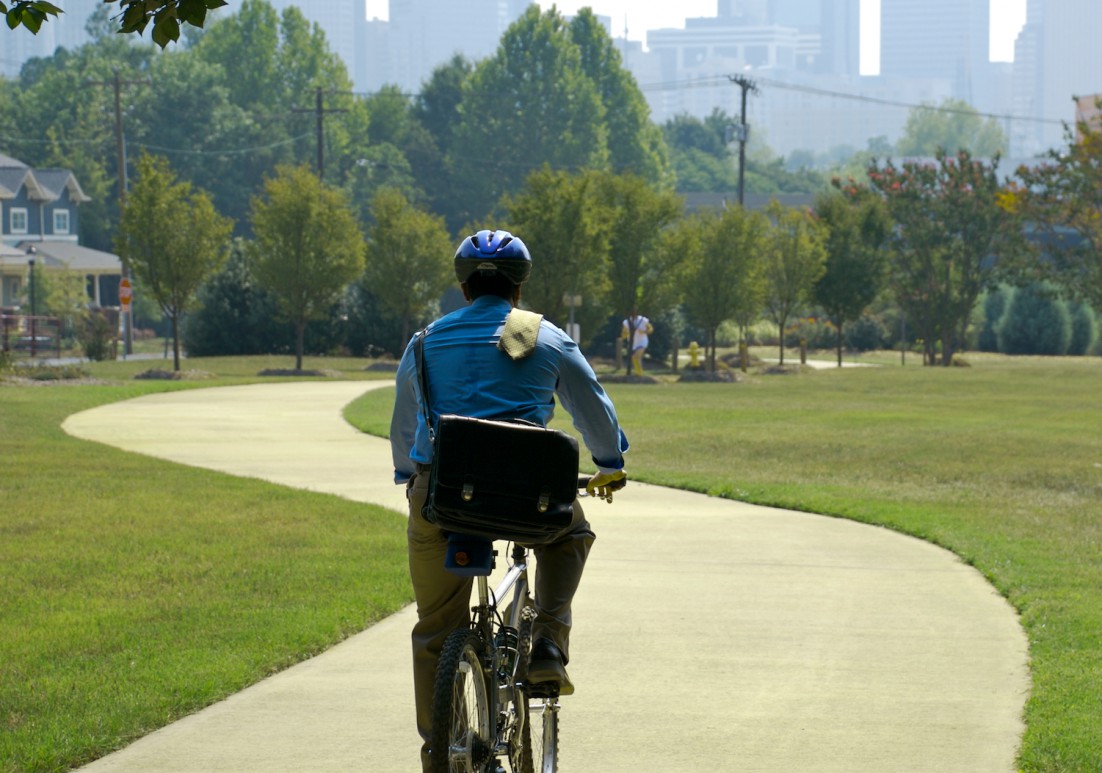Action Steps
Economics
Maximize economic competitiveness and return on investment by creating more attractive walkable and bikable communities through additional NCDOT, public, and private funding.
| ID | Recommended Action Step Idea | Lead Agency | Agency Partner(s) | Chapter Ref. |
|---|---|---|---|---|
| EC1 | Promote walking and bicycling as an amenity in North Carolina by featuring such exemplary facilities as the state bicycle route system, East Coast Greenway, Mountains-to-Sea Trail, and the Carolina Thread Trail. | NC Chambers of Commerce, Visitor Bureaus | Local governments, NCDOT-DBPT | |
| EC2 | Enhance VisitNC.com state tourism website and Dept. of Commerce website to include information about quality-of-life measures (such as access to transit, greenways, etc.). | Department of Commerce | ||
| EC3 | Adopt high-priority performance measures described in Chapter 8. | Department of Commerce | NCDOT-DBPT | 8 |
| EC4 | Provide modern, innovative means of sharing information and mapping on regional trails through Internet, smartphone, etc (Good example is Carolina Thread Trail website). | NCDOT-DBPT | ||
| EC5 | Develop study of real estate values in walkable and bikable communities in North Carolina. | Department of Commerce | ||
| EC6 | Track jobs created or related to walking/biking projects and activity. | Department of Commerce | ||
| EC7 | Track businesses locating in NC at least partially due to quality of life, walking/biking/trail amenities. | Department of Commerce | ||
| EC8 | Track visitors coming to North Carolina at least partially to walk or bicycle. | Department of Commerce | ||
| EC9 | Track economic impact of walking and biking events. | Department of Commerce | ||
| EC10 | Track retail sales in areas where walking and biking facilities are added. | Department of Commerce | ||
| EC11 | Calculate walk/bike scores across NC and make the connection to real estate values, jobs, and tourism. | Department of Commerce | ||
| EC12 | Develop additonal walking and bicycling events such as races, fundraisers, etc. | Local governments, Chambers of Commerce | BikeWalkNC, advocacy groups | |
| EC13 | Educate developers of the economic benefits of walkability and bikability. | NCDOT-DBPT | BikeWalkNC, advocacy groups | |
| EC14 | Maintain database of developers/developments that incorporate walkability and bikability as key features. Highlight those developments on website (like Briar Chapel). | Department of Commerce | ||
| EC15 | Develop study of real estate values in walkable and bikable communities in North Carolina. | Department of Commerce | ||
| EC16 | Maintain and establish new education, encouragement, and enforcement programs recommended in Chapter 7. | NCDOT-DBPT | 7 | |
| Economics: Main Street's Program | ||||
| EC17 | Establish the Main Street Program as a collaboration, involving NCDOT more thoroughly in future projects to address Complete Streets transportation elements of the project. | Department of Commerce | NCDOT-DBPT | 3 |
| EC18 | The Department of Commerce should continue partnering with state agencies (through interagency collaboration) along with local health departments and walking/biking groups as part of the Main Street Program. | Department of Commerce | Healthy Environments Collaborative | 3 |
| EC19 | The Department of Commerce should update their design element of the Main Street Program to include language about "Complete Streets." | Department of Commerce | 3 | |
| EC20 | NCDOT should communicate with and provide educational opportunities for Department of Commerce staff regarding Complete Streets and its health and economic benefits. | NCDOT-DBPT | Department of Commerce | 3 |
| Economics: NC STEP Program | ||||
| EC21 | Incorporate technical workshops and training sessions on integrating bicycle and pedestrian accommodations into a town's transportation network into the training element of STEP. | 3 | ||
| EC22 | Incorporate an NCDOT presence in the coaching phase of STEP. This DOT partnership will educate towns about the far-reaching benefits and relatively low costs of bike/ped projects and programs, citing the striking economic benefits noted in other rural regions of North Carolina. | 3 | ||
| EC23 | Identify grant opportunities specifically for the planning and implementation of Complete Streets to jump start the revitalization of Main Street. | 3 | ||





